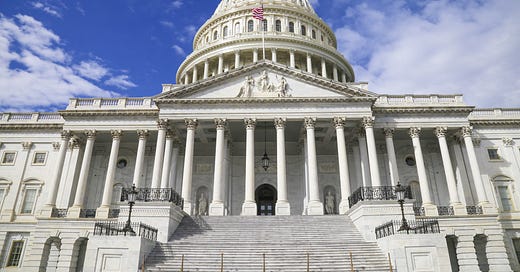Where Did the Rest of the Stimulus Money Go?
Less than a fifth of the COVID relief bill went directly to Americans' pockets. Now people are tweeting bizarre findings in the legislation.
2020 has been an unbelievable year. So, for many, Walker Bragman’s claims about the COVID relief bill, aka the ‘stimulus package’, on Dec 21 came as little surprise:
He continued the thread with more spotlights on the bill’s defense spending: a few million here, a few billion there. $2bn for Space Force! Smh.
Other blue-check-marked tweeters posted similar things about “this bill”. The Gravel Institute noted:
Tens of thousands shared and liked these posts, outraged that so much of the stimulus package was being spent on things other than COVID relief.
What wasn’t immediately clear from the day’s discourse was that there were two different bills being discussed here.
By the time Bragman corrected his wording a few tweets later, he had been called out for misrepresenting the $900 billion COVID relief bill as the $1.4 trillion omnibus spending bill. Passed through Congress together, they formed this year’s $2.3 trillion Consolidated Appropriations Act.

The US government passes an itemised budget for government spending at the end of every year, which becomes the following year’s ‘appropriations act’. This year the second, long-discussed COVID relief bill was a part of it.
Politico’s breakdown shows that all the $900bn in COVID relief funding will go towards…COVID relief. This includes test and trace funding, funeral expenses, farming subsidies, unemployment benefits, etc. Other provisions in the relief bill included extending the moratorium on evictions into next year.
The $600 stimulus cheques to individuals will total $166bn. All adults earning under $75k will receive $600, plus another $600 per child. According to Statista, that earnings bracket included roughly 53% of American adults in 2019 — it will include many more now, of course.
The other, larger government spending package did have huge defense spending and foreign aid — as an average US government budget tends to do.
So far, so Twitter. Though Bragman was dragged for the imprecise language which he copped to, several times, immediately after, he still makes a good point. Why are billions upon billions of taxpayer dollars being spent on defense in the US (and other countries) rather than supporting those who have lost their incomes for the better part of a year?
The point he and others are making is that the consolidated bills show where the government’s spending priorities lie, more generally. Caitlin Emma at Politico, one of the reporters who provided the COVID relief package breakdown, also collated the toplines of the larger omnibus package:


Where $166bn was earmarked for low-income Americans' immediate needs, $696bn was earmarked for defense. The US has the highest defense spending in the world, around three times that of the second-highest, China (which has four times the population.)
And yet after a year in which millions have seen no income whatsoever, and a period of deadlock in which members of Congress earned around $100,000, they would only sign off on a single $600 payment — less than a citizen’s average rent.
Saying that, ‘sign off on’ may be too strong a phrase, given how late in the day the bill was eventually provided to members of Congress. AOC argued that a few hours *might* not have been long enough for them to read all 6000 pages.


CORRECTION: This piece originally stated that US defense spending was $2bn per American per year. It is actually roughly $2000. This is because my dumb ass put the decimal in the wrong place when calculating. It has now been corrected. Thanks to bwall_trades for gently breaking the news to me.









